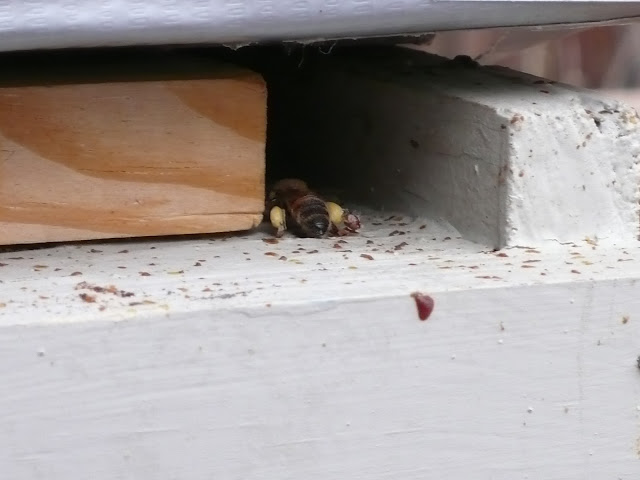For us that marks the time to put out the yellow jacket traps.
This time of year all the yellow jackets will be queens. Only the queen yellow jackets survive the winter. In the early spring they leave their hibernation spots to find food and establish nest sites. As soon as the queen's first brood emerges they will take on the hunting responsibility and the queen will stay in the nest to lay eggs.
Trapping queens early in the season eliminates the formation of new yellow jacket nest and reduces the yellow jacket numbers during the summer.
I have issues every fall with yellow jackets attacking/robbing my honey bee hives.
I like to use these type traps:
This one is in the back corner of our 1/4 acre lot. The location of the traps do matter in terms of effectiveness. I haven't tried this spot before. Some spots in the yard catch about a dozen queens while other spots have trapped none during the same timeframe. I bait my traps with purpose made/bought yellow jacket pheromone.
Here is another in the front yard diagonally across the property from the first trap:
This spot under the scotch pine has been the most reliable trapping spot. This trap is about 7 feet off the ground between our driveway and the neighbor's.
Typically, we will have about a half dozen yellow jacket hives established on our property (even with the trapping). The favorite spots for nests are the barbeque, eves of the house and shed, and worse for us is within our rock wall.
George stays alert but has gotten stug in the face twice in past years.






